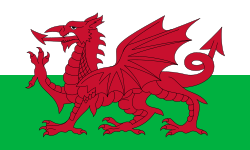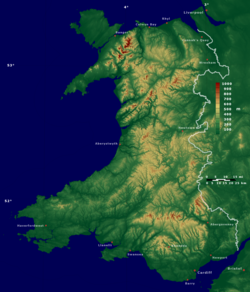– in the United Kingdom (camel)
The following outline is provided as an overview of and topical guide to Wales:
Contents
- General reference
- Geography
- Environment
- Regions
- Demography
- Government and politics
- Branches of the government
- Law and order in Wales
- Military
- Local government in Wales
- History
- History of Wales, by period
- History of Wales, by region
- History of Wales, by subject
- Culture
- Art in Wales
- Religion in Wales
- Sport in Wales
- Economy and infrastructure
- Education in Wales
- See also
- References
- External links
Wales – a country that is part of the United Kingdom, [1] bordered by England to its east and the Atlantic Ocean and Irish Sea to its west. It has an estimated population of three million and the Welsh and English languages are both official languages. The Welsh language is an important element of Welsh culture. Its decline has reversed over recent years, with Welsh speakers estimated to be around 20 per cent of the population of Wales. [2]




